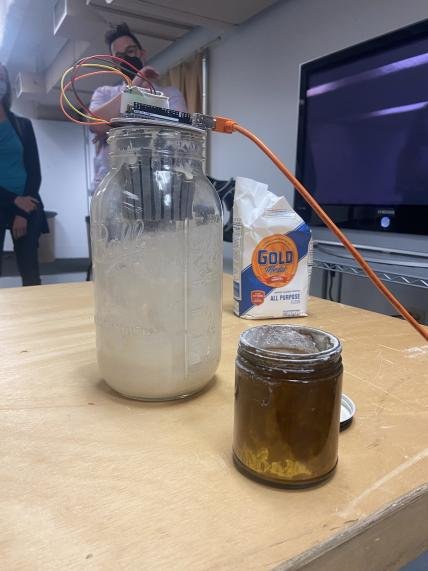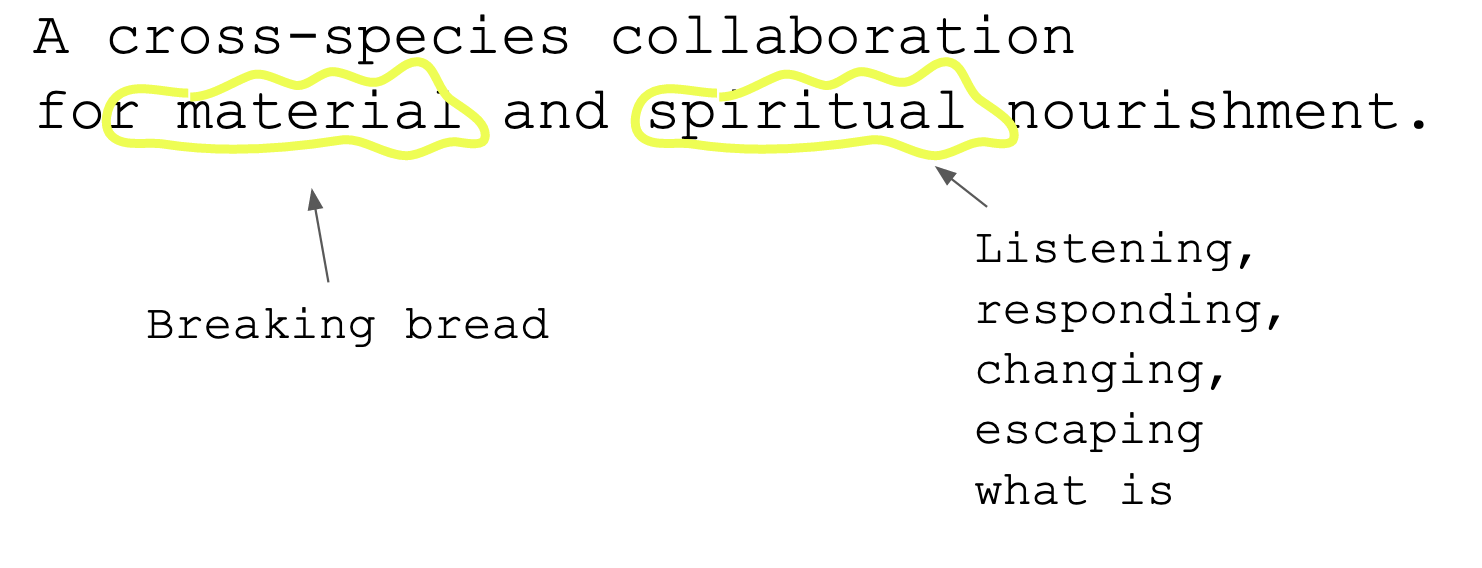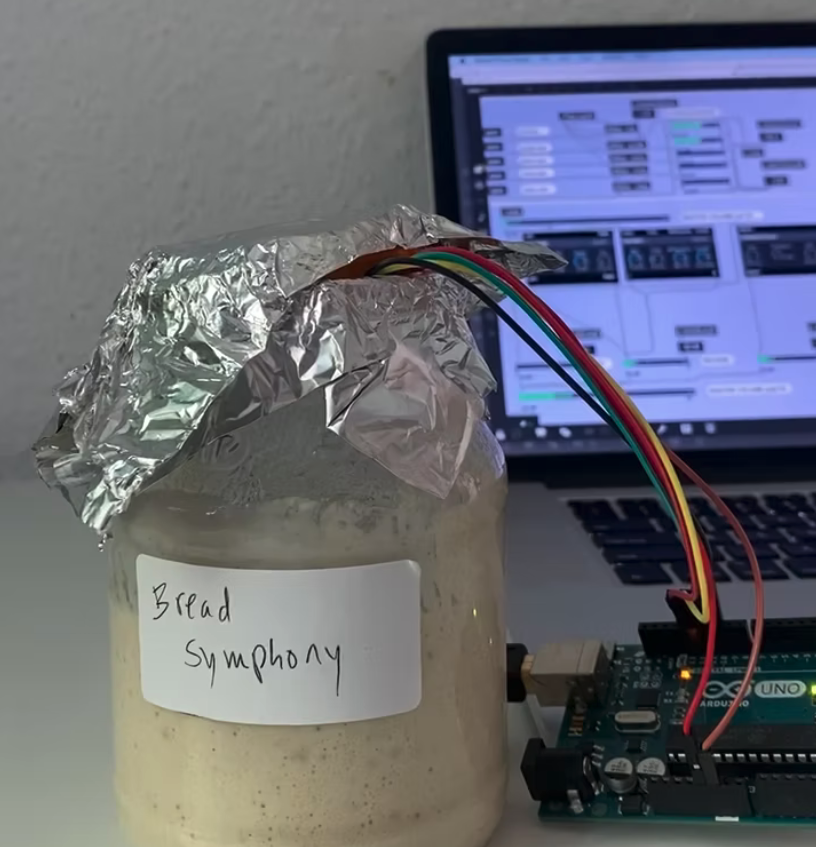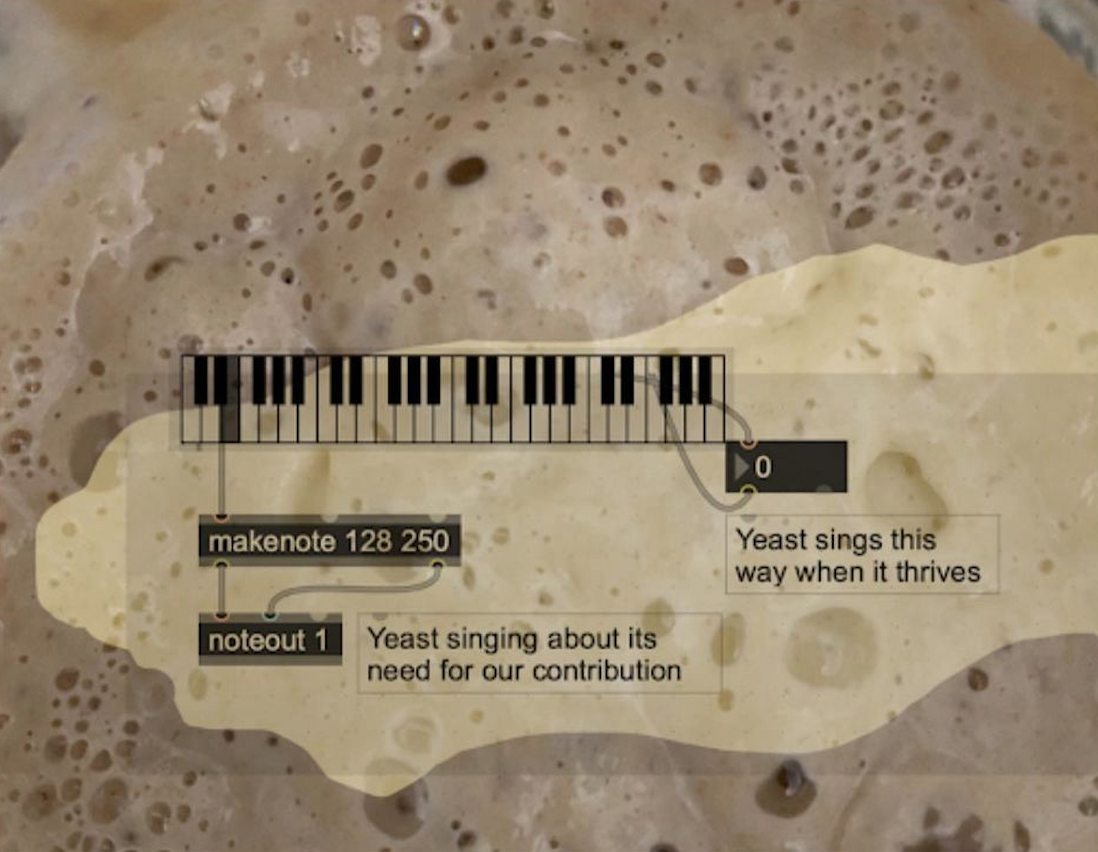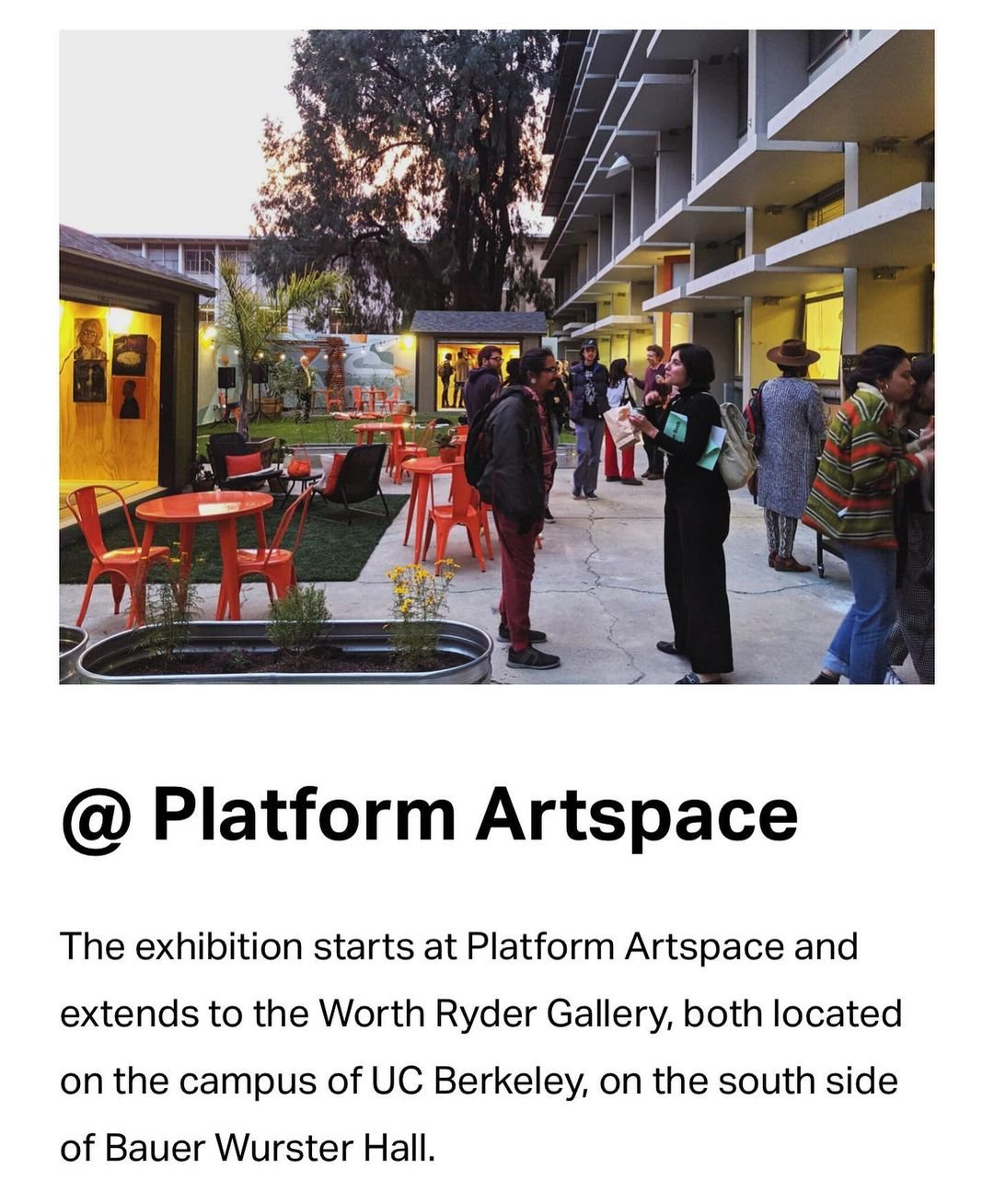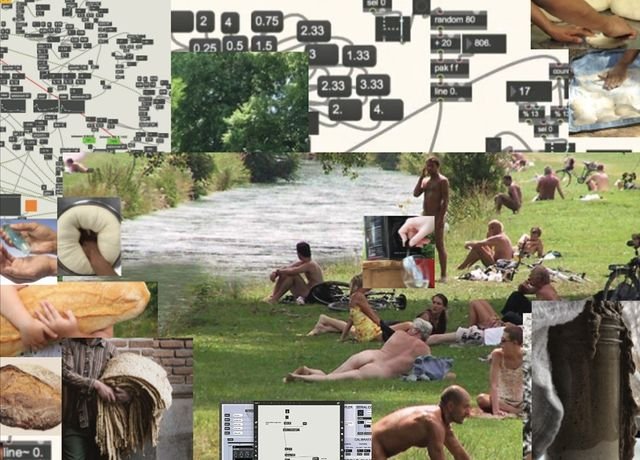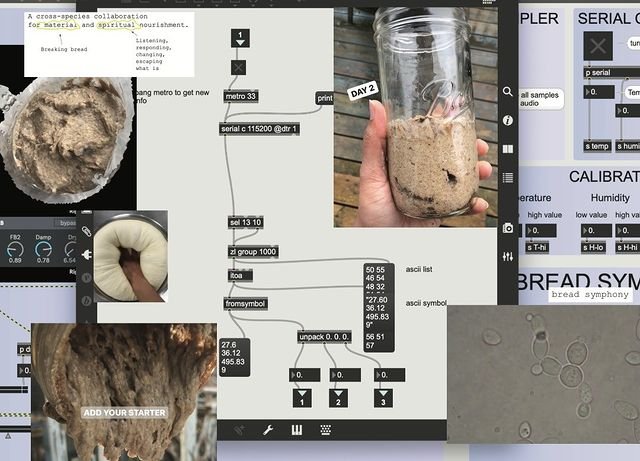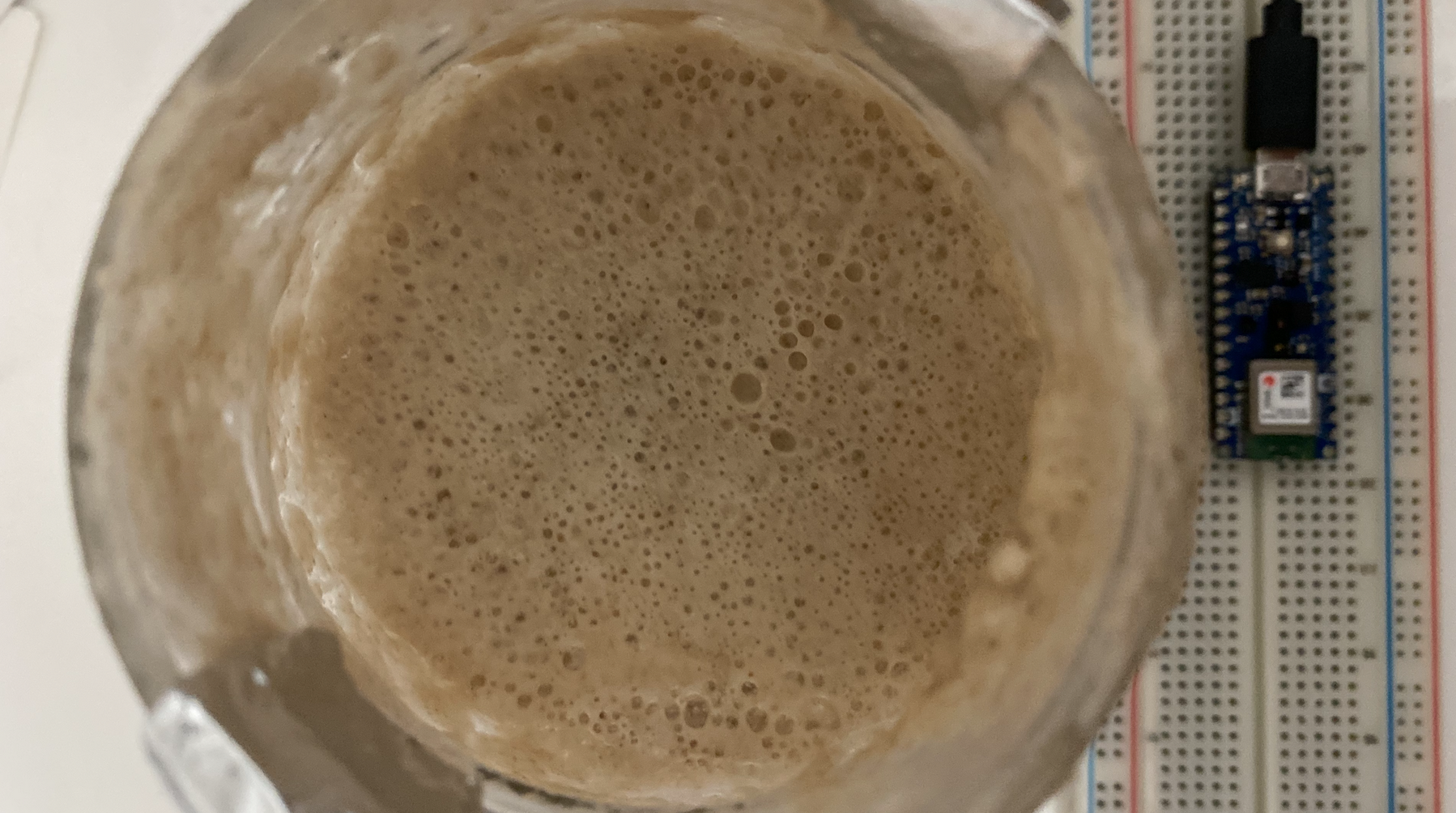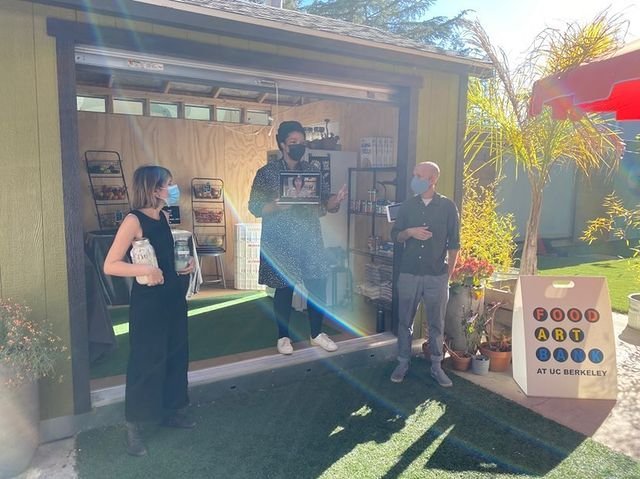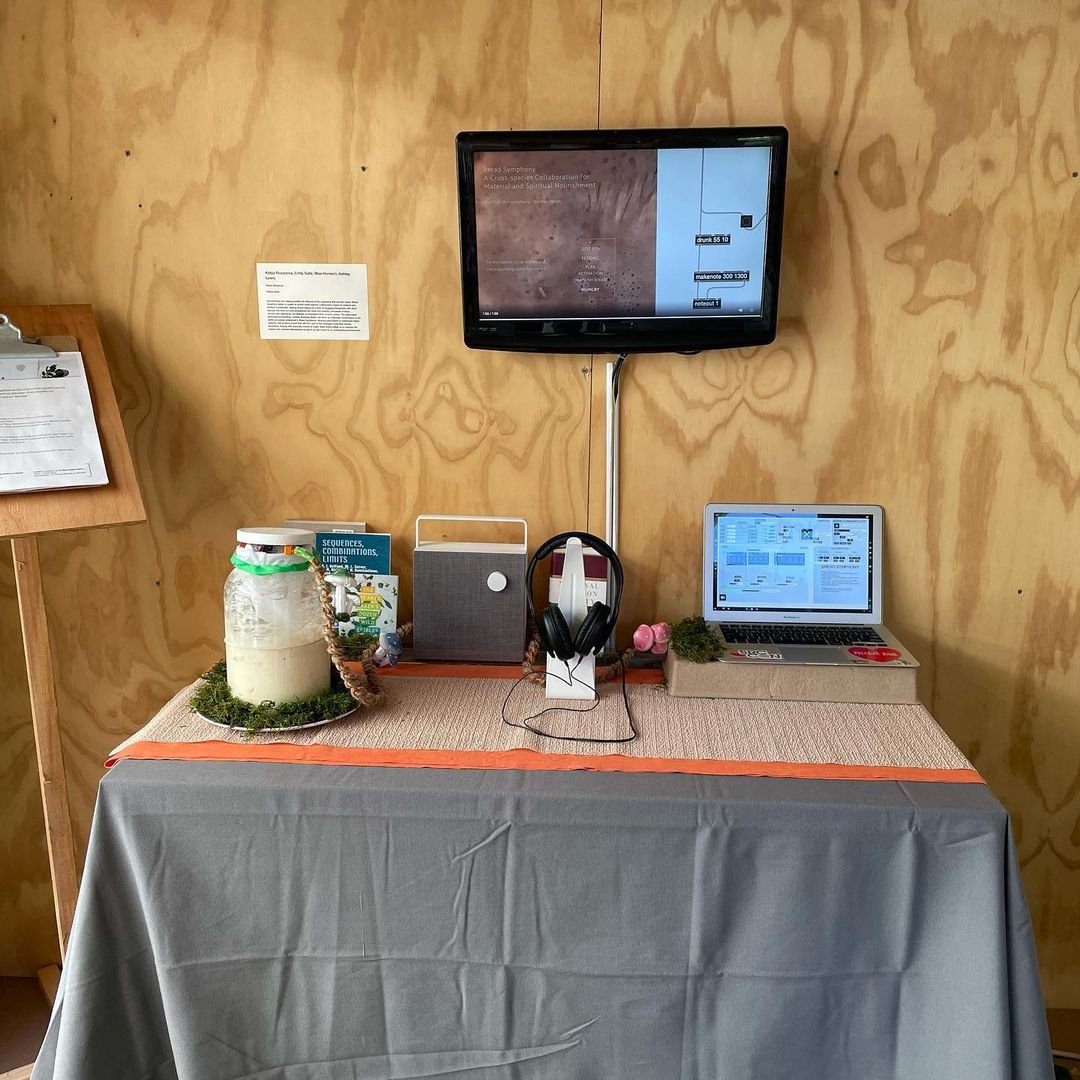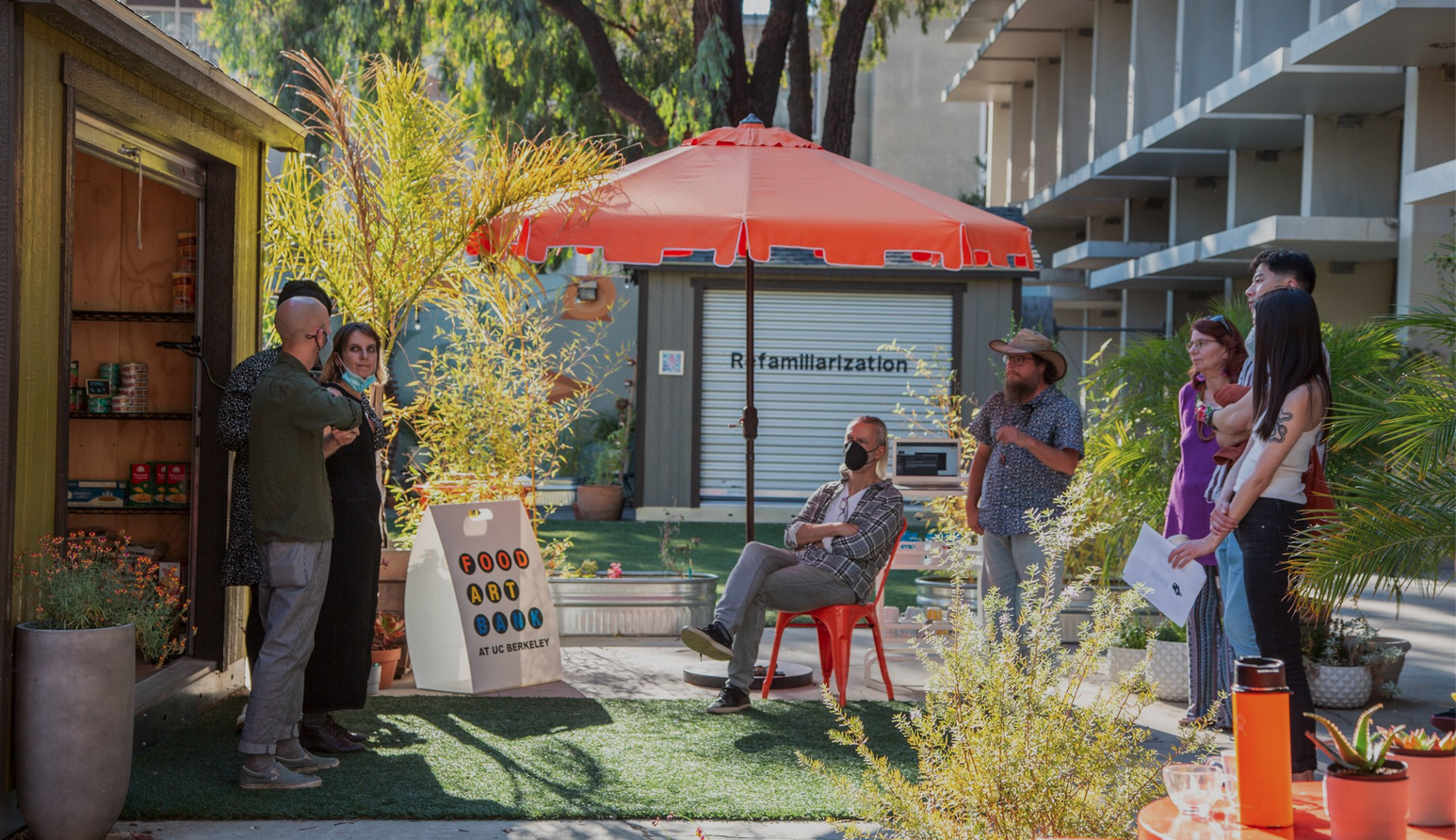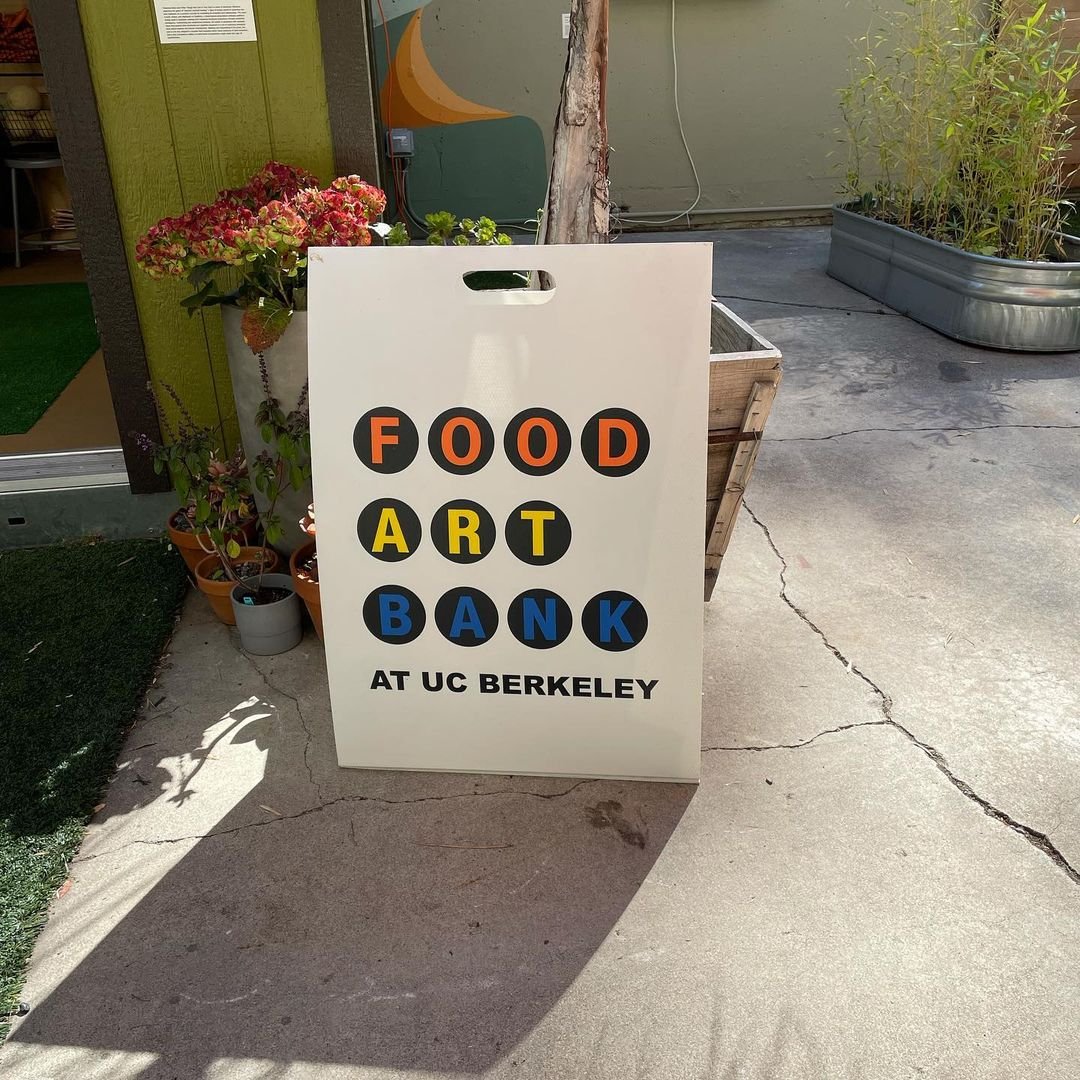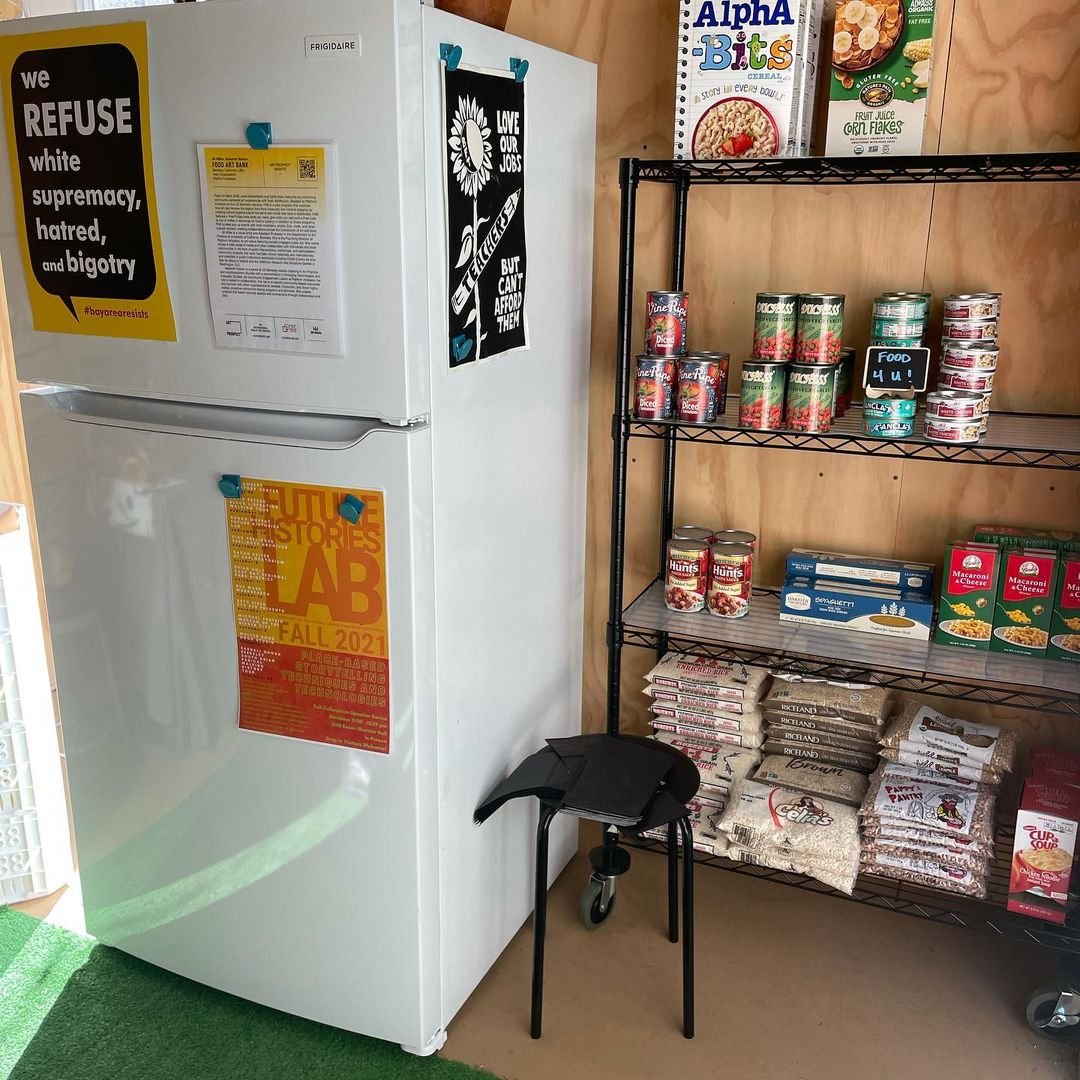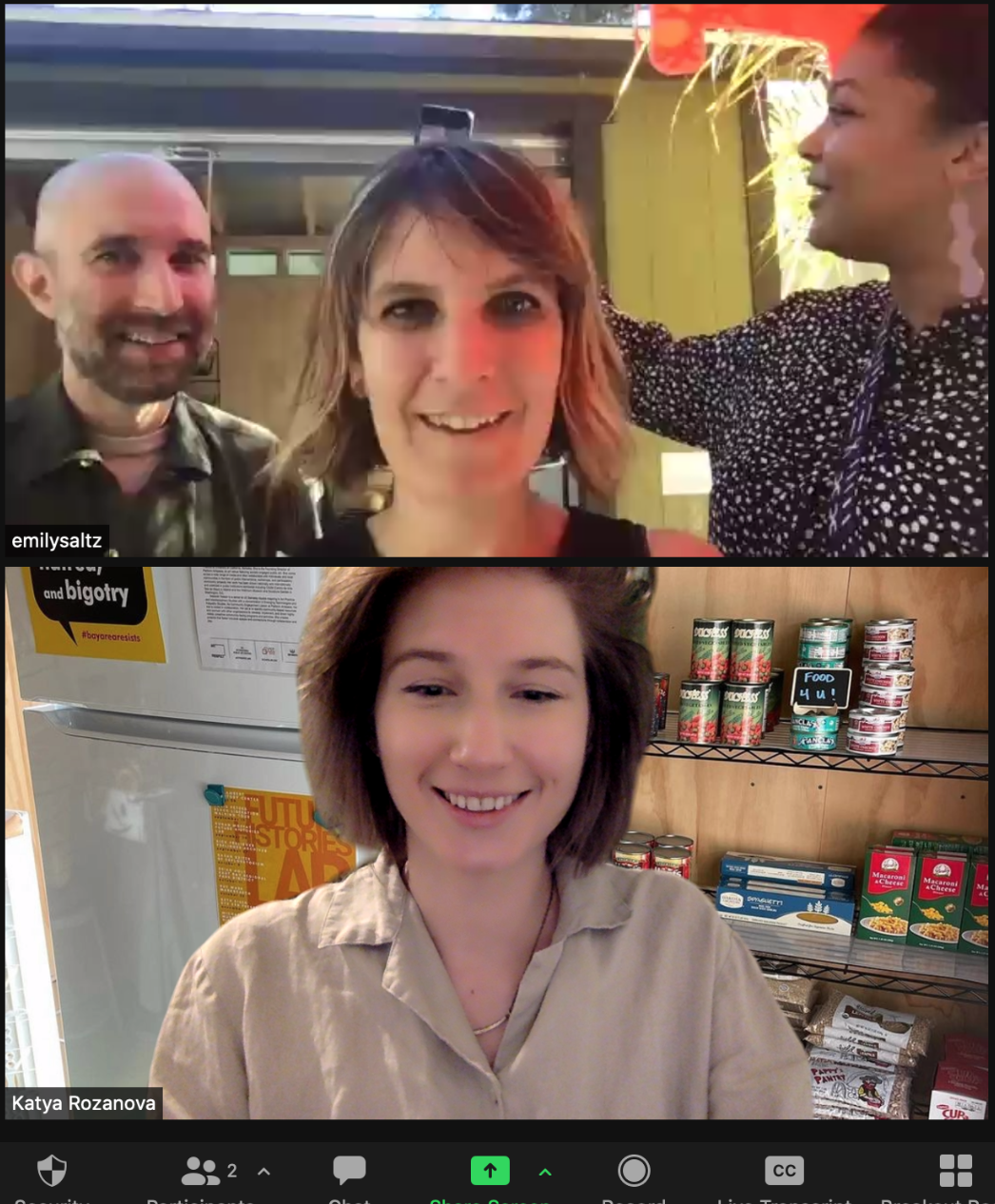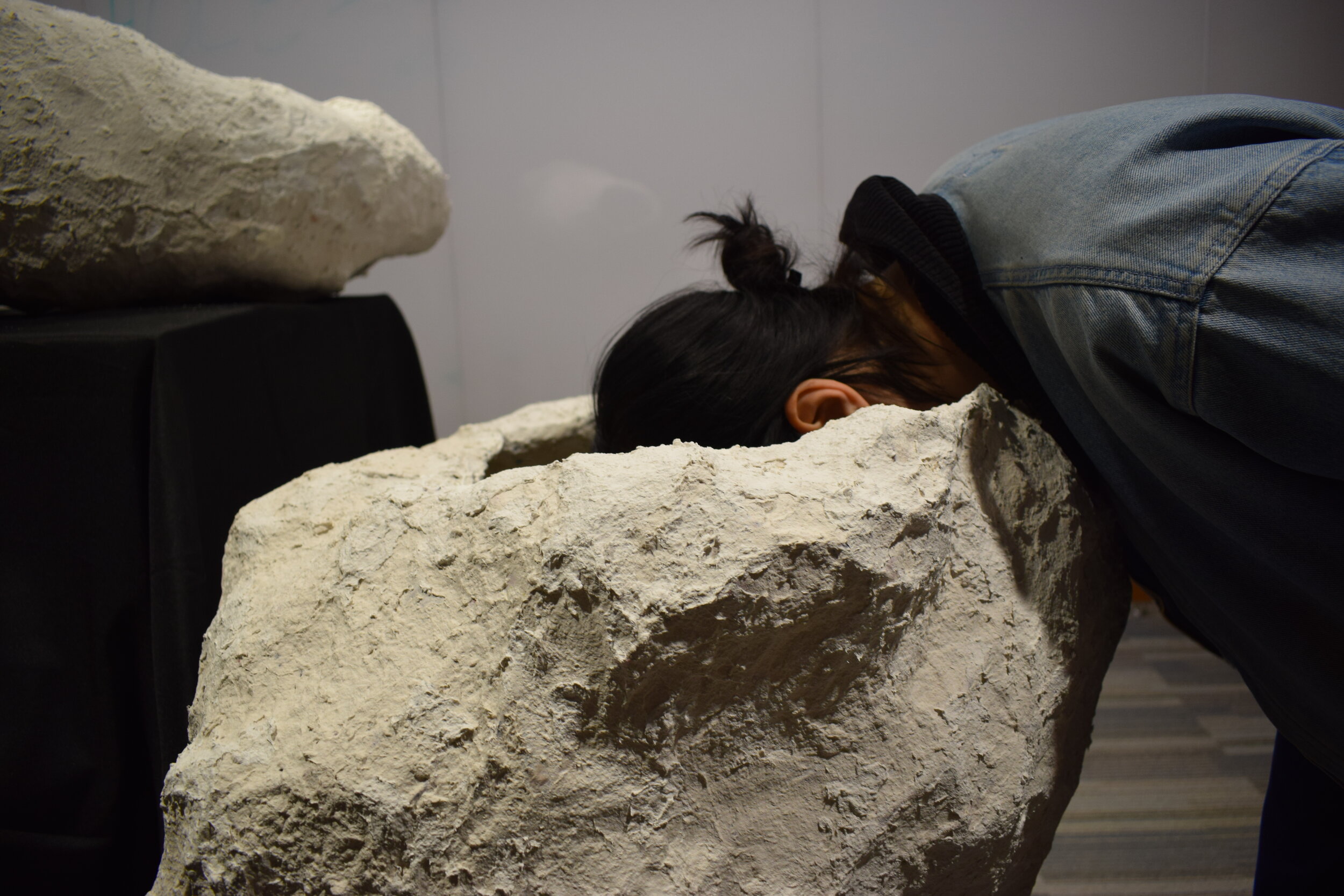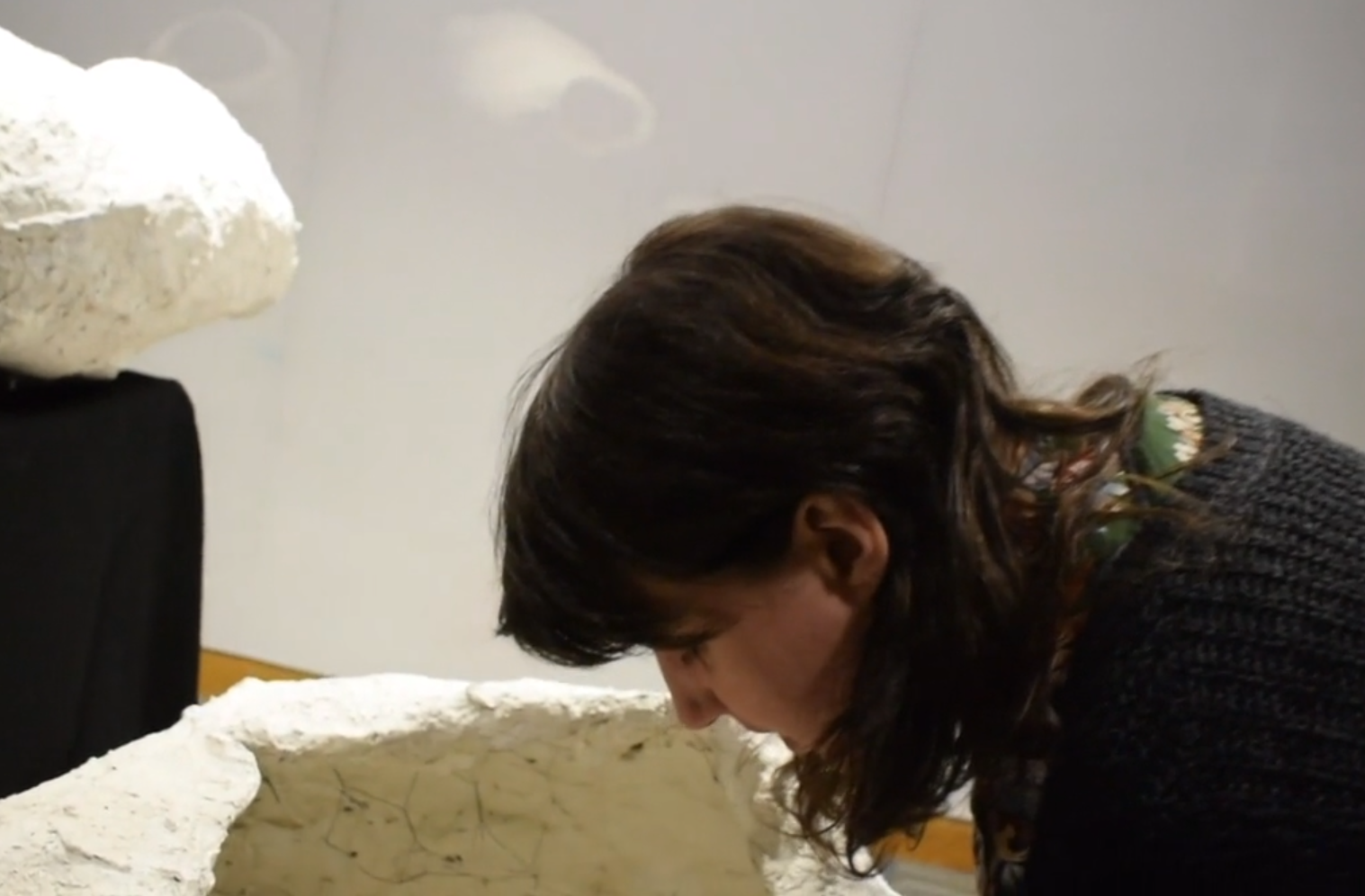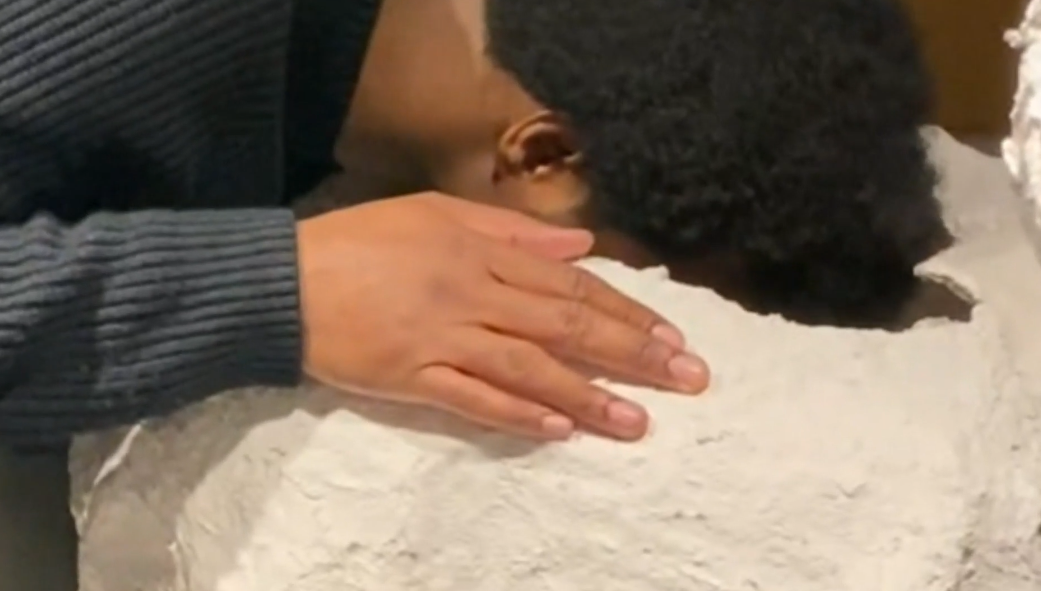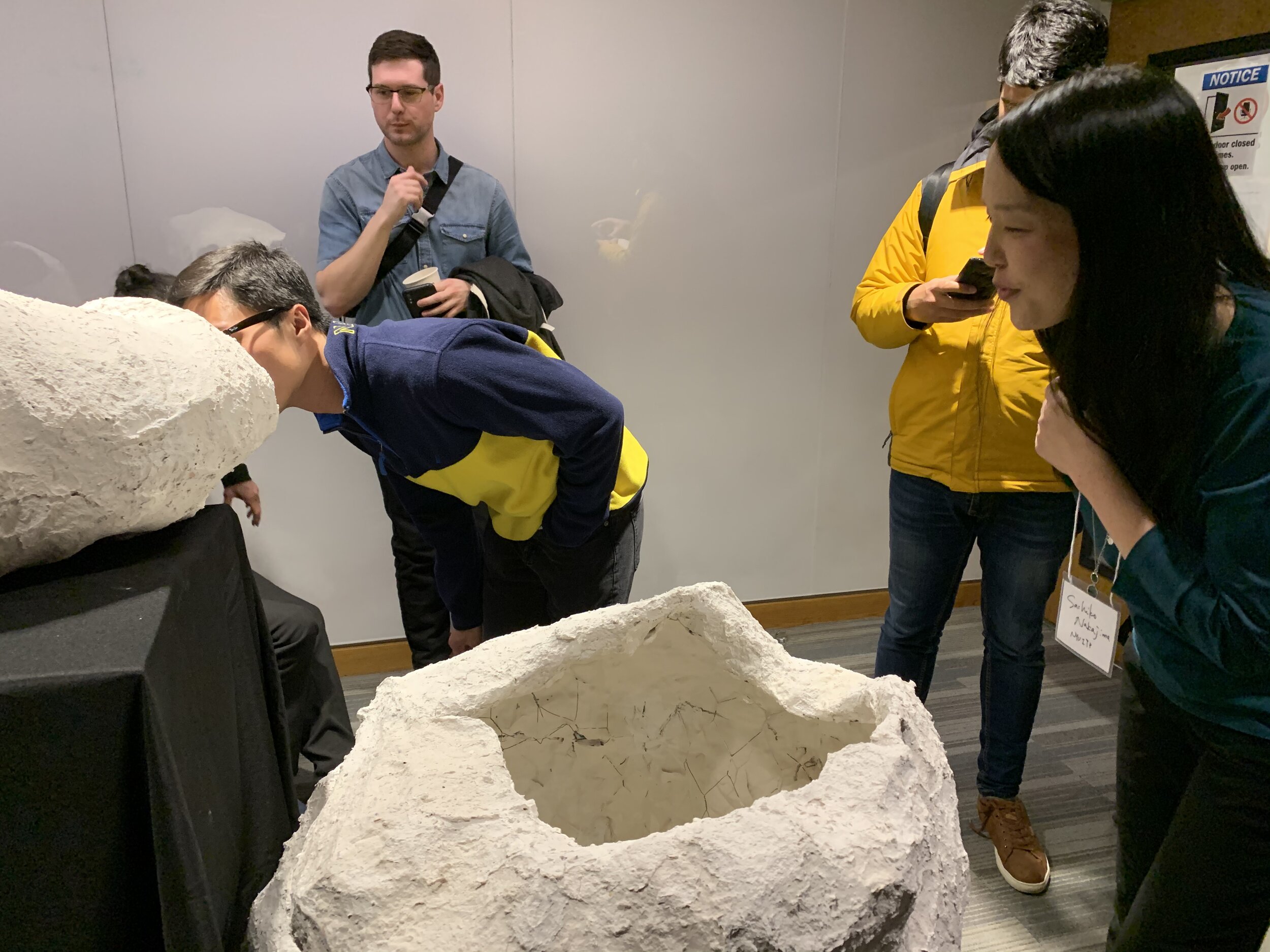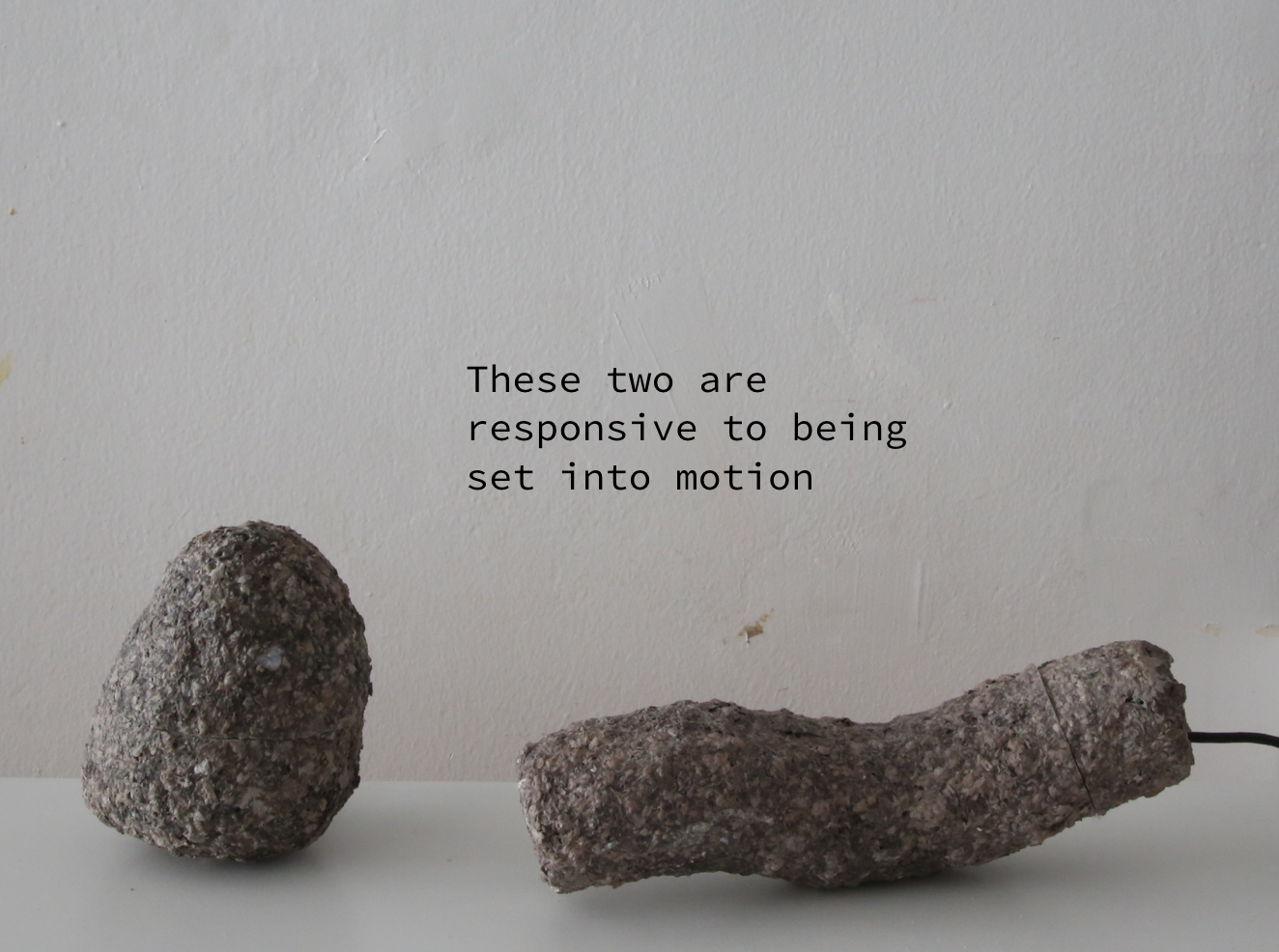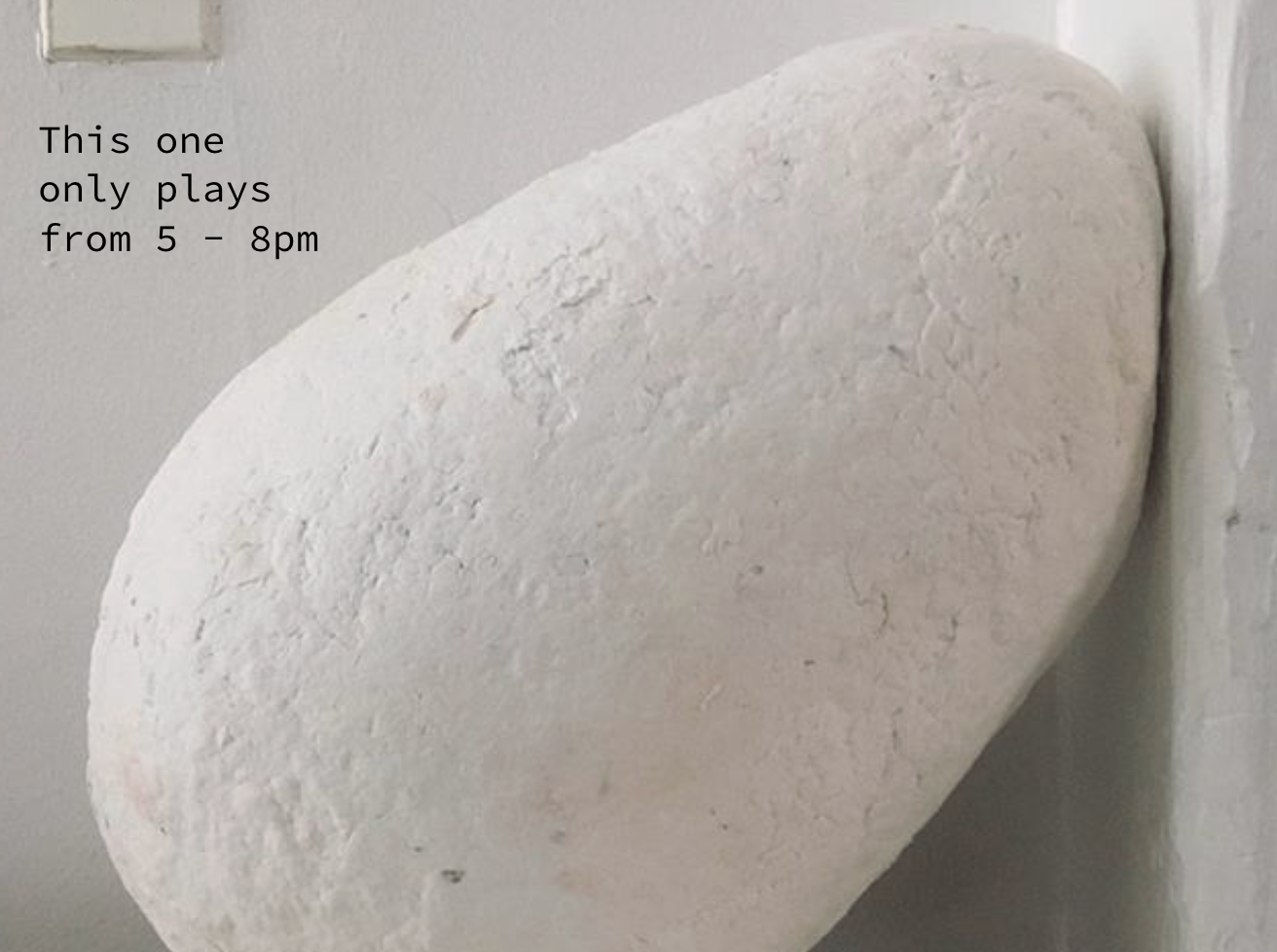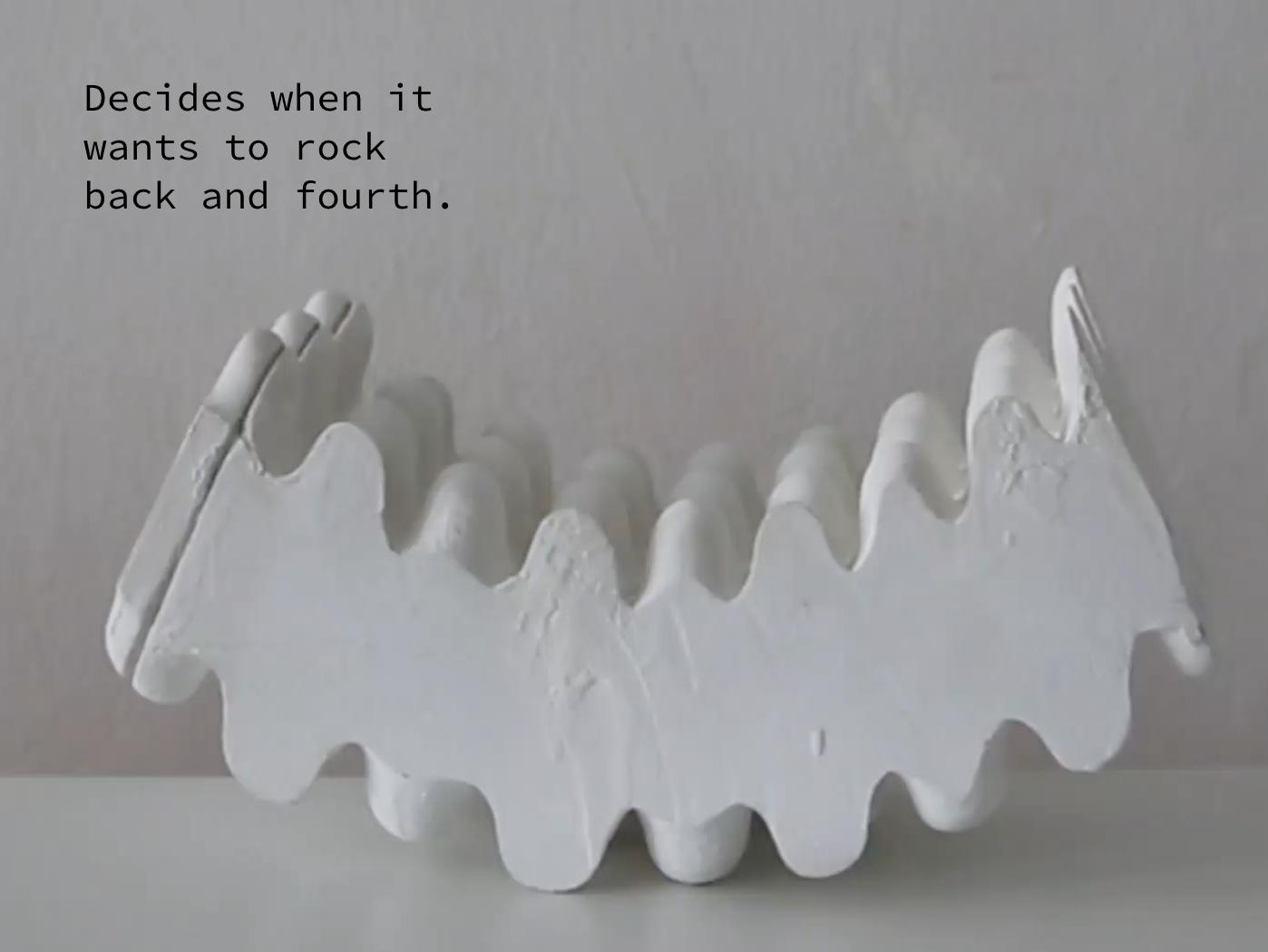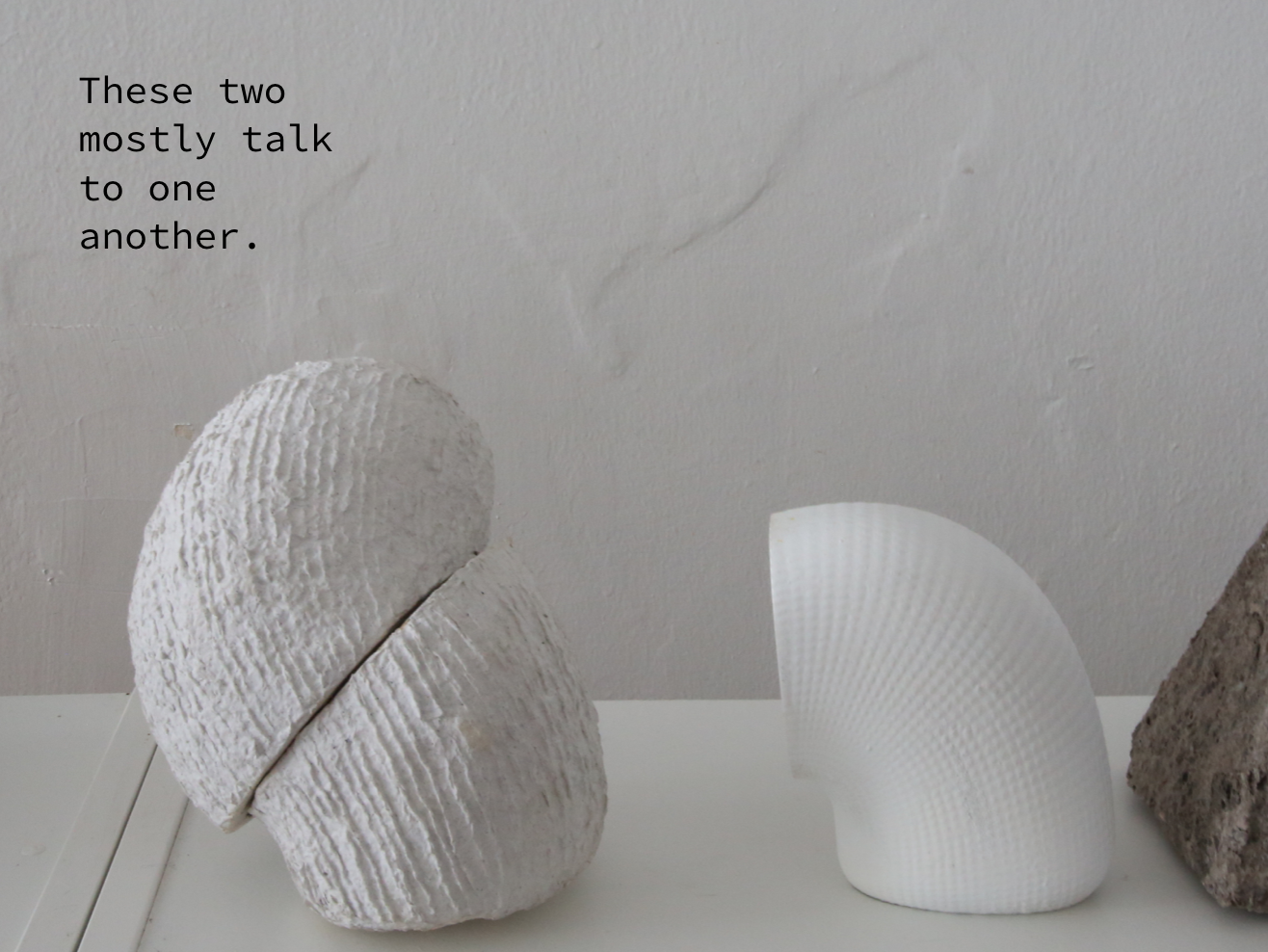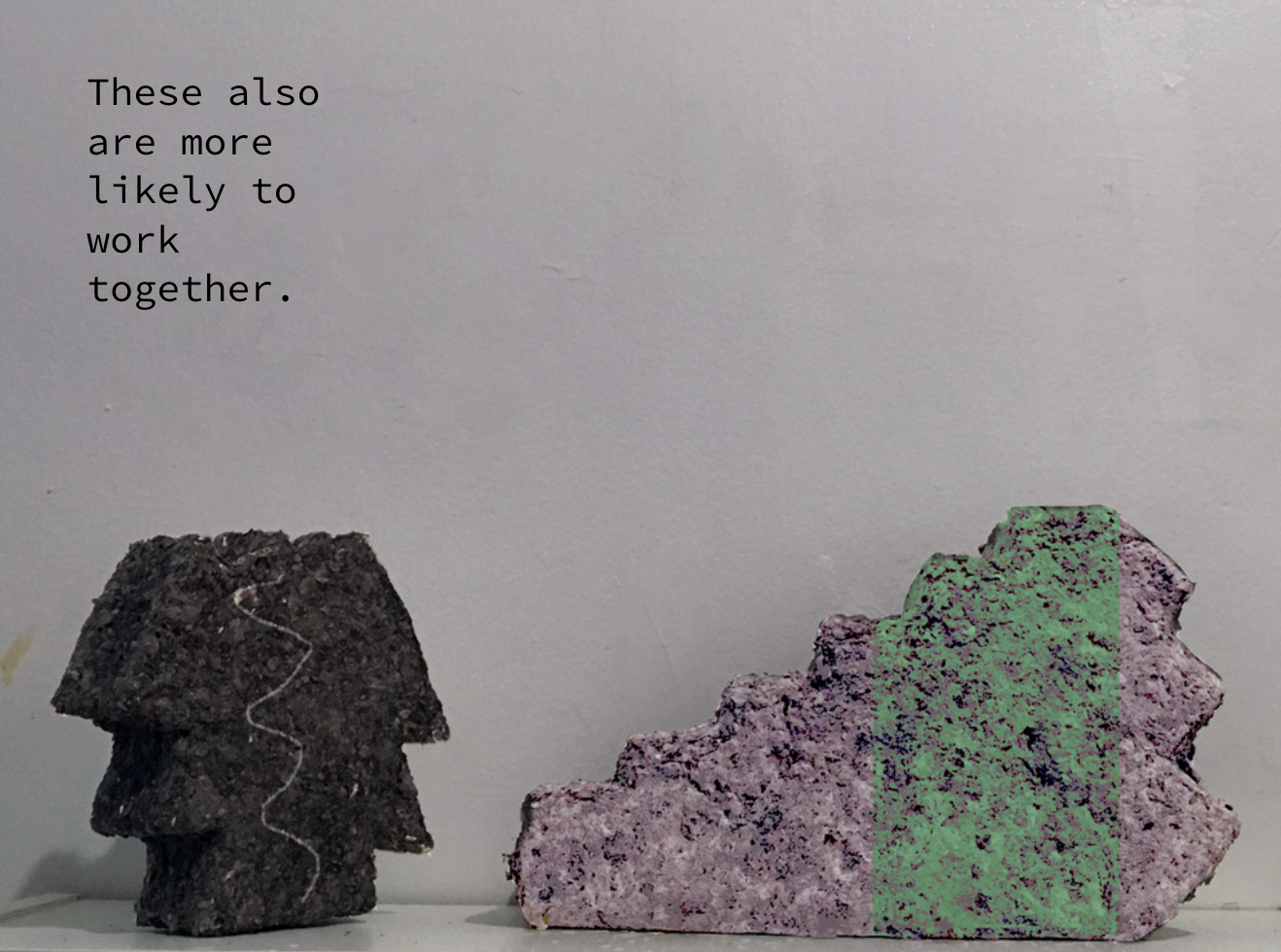In 2021 I invited collaborators Max Horwich, Ashley Jane Lewis, and Emily Saltz to create Bread Symphony with me as a practice work at SloMoCo (Slow Movement Computing Residency), a community of artists and researchers who convene to share insights, findings, and provocations at the intersection of movement and computing. It was later shown at Berkeley's Refamiliarization exhibit in Berkley's Platform Space, New York City's Electroacoustic Improvisational Summit 2022 (which was later screened at the Images Festival in 2023), Images Film Festival in Toronto, and the International Conference for Movement Computing 2022 in Chicago.
Live jar of bread starter with sensors feeding data into MaxMSP, where it feeds an algorithm, determining sonic output such as pitch, note, and sound sample. CO2, humidity, and proximity sensors are registering the off-gassing and rising of the starter).
Bread Symphony is an ongoing generative sound installation experiment that uses the collaborative efforts of nonhuman organisms to produce sonic compositions. We make audible the symbiosis of living organisms in the literal and figurative fermentation vat and use these explorations to re-frame notions of human centrality, acknowledge nonhuman collaborators, and encourage inner species collaboration.
Bread Symphony is an generative installation: bread fermentation is measured and sonified, made into a symphony that authors itself and plays live. It's part of a four part experiment in which we capture the movement of the bread during its fermentation (off-gassing, rising) and the movement of our hands and bodies during the preparation (kneading, shaping - part II) and consumption phases.
We abstract the movement of our bodies and the activity of nonhuman actors we collaborate with and framed this relation of collectivity by making it audible in one sonic composition. In this way the symphony becomes an artifact of a cross-species collaboration. We are drawn to bread-making as it is a form of engaging other species dialogically. It requires observing and responding to yeast activity. Tending to and “listening” to the yeast is necessary in order for a nourishing (materially , sonically, socially, spiritually) results to happen for all parties. The partial absence of our own agency/authorship replaced by input from nonhuman elements guides conversations and creates opportunities for others to re-imagine relationalities.
While the composition is a two week symphony (takes about two weeks for a starter to mature and be used to bake bread), we created a sample (first video - Vimeo link above) to illustrate the overall aesthetic. The sounds range from generated piano notes and sound samples such as vocalizations (by Emily Saltz), claps, gurgles, and clicks, whose pitch is bent and shaped by incoming information from the yeast activity in the form of serial data.
Bread Symphony at Re-familiarization at New Media Berkely 2021
Workshop
The accompanying performance/workshop, entitled Breaking Bread, served as a thematic continuation of the earlier processes presented in Bread Symphony, allowing participants to collectively listen, respond, and produce sound that formed a new part of this emergent more-than-human symphony.
In addition to the live sound-emitting installation that reads CO2 levels live, the group incorporates somatic deep listening workshops to research what it feels like to become acutely aware of interdependence with one another and other species. Collective bread-making is a practice that requires cooperating with human and nonhuman systems, to look outside of one’s singular capabilities and embrace collective thinking, research, and action. With such a work we also hope to challenge conventional ways of knowing - knowing process, creation, consumption, seen and unseen collaborators, while centering some of our earliest forms of storytelling and communication, sound and nourishment.
From the Re0familiaeization exhibiton at At UC Berkeley:
Max Horwich, Ashley Lewis, Katya Rozanova, & Emily Saltz [ Bread Symphony ] Bread Symphony is an active cross-species collaboration meant for material and spiritual nourishment. Seeing bread-making as a form of engaging dialogically with other species, the collective behind this work aims to document and make audible the lifecycle of the organisms that ferment the bread as we accompany these oft-unperceived organisms in sonic unison.
The accompanying deep listening, somatic performance/workshop, entitled Breaking Bread, served as a thematic continuation of the earlier processes presented in Bread Symphony, allowing participants to collectively listen, respond, and produce sound that formed a new part of this emergent more-than-human symphony.
Left to right: Max Horwich, Ashley Jane Lewis, myself (on the phone! I had to zoom into the workshop), and Emily Saltz. UC Berkeley’s Refamiliarization Exhibit. 2020.
Workshop we lead at UC Berkeley’s Refamiliarization Exhibit. 2020.

